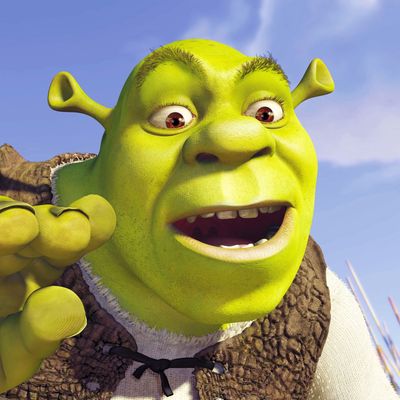
Shrek, which is partly derived from William Steig’s illustrated children’s book about a gruff, kindhearted ogre, continues a welcome trend in animation: The script, instead of being what we tolerate in order to savor the visuals, is a delight all by itself. This trend is particularly rampant in the field of computer animation, notably the Toy Story movies and, to a lesser extent, Antz, as well as live-action movies, such as the Babe films, which include computer-animated techniques. There’s a marvelous slapstick irreverence to the script for Shrek, written by Ted Elliott, Terry Rossio, Joe Stillman, and Roger S. H. Schulman, which adults, perhaps more so than the children they accompany, will appreciate. Just about all the famous fairy tales are sent up, as well as everything from The Hunchback of Notre Dame to The Dating Game. We’re watching a celebration of the nutty new ways in which our pop memories can be recycled and made sport of.
The animation, directed by Andrew Adamson and Vicky Jenson, is often on the same wriggly, giggly level as the script, although the more “human” characters, such as Princess Fiona and Lord Farquaad, are less interesting than the animals and creatures – a common pitfall in animated films of all types. Among the celebrity voices, best are Mike Myers’s Scots-accented Shrek and Eddie Murphy’s Donkey, who is so funny and so gloriously an emanation of the actor that, afterward, you might make the mistake of thinking Murphy was actually in the movie, braying at full comic throttle.

